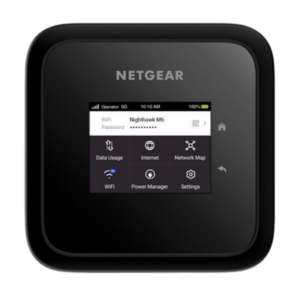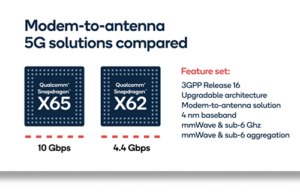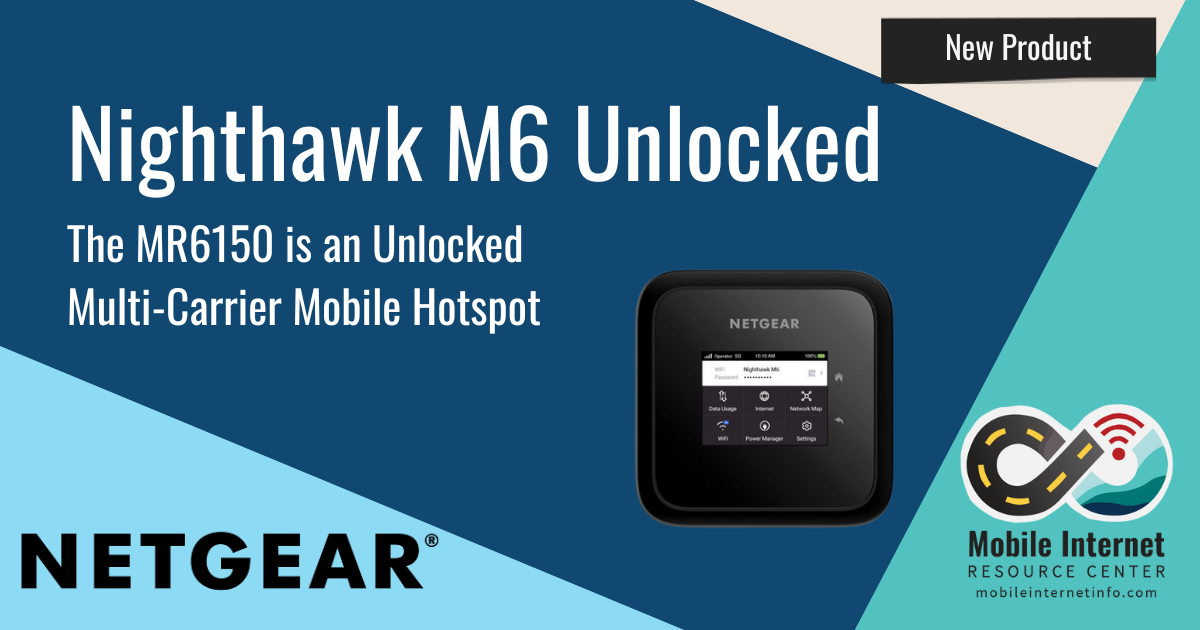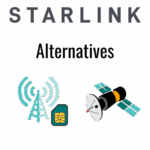Key Points:
- The Nighthawk M6 MR6150 is the unlocked, multi-carrier version of the AT&T Nighthawk M6 series of mobile hotspots.
- The Nighthawk M6 MR6150 5G supports the cellular bands currently in use by the three major US carriers.
- The MR6150 supports sub-6GHz 5G but does not support short-range millimeter-wave (mmWave) 5G networks.

Netgear today released a new version of the Nighthawk M6 5G hotspot, model number MR6150.
This new hotspot is an unlocked version that is sold by Netgear and is compatible with the cellular networks of AT&T, Verizon, and T-Mobile.
The MR6150 is part of the M6 series of mobile hotspots, which all share a common design. The MR6150 most closely resembles the M6 MR6110, which is exclusive to AT&T, but with support for many more cellular bands. Like the AT&T version, the MR6150 utilizes the Qualcomm Snapdragon X62 cellular modem - the little brother of the X65.
The MR6150 also offers Wi-Fi 6 (802.11ax) local networking and nomad-friendly features like an Ethernet-out port and TS-9 ports for an external MIMO antenna.
What isn't so little is the price - $799 - making this the most expensive flagship mobile hotspot we've ever seen.
Read on to determine if the price is worth it for you...
Table of Contents
Nighthawk M6 Unlocked Video Overview
Netgear Nighthawk M6 MR6150 5G Overview
The unlocked M6 5G mobile hotspot has the same core design as the other versions of the M6 and most closely resembles the MR6110 from AT&T in terms of features, performance, and hardware.
Here's a quick rundown on the current M6 variants:
- M6 (MR6110) $309.99 - AT&T version without millimeter-wave (mmWave) support and uses the X62 modem. Supports Wi-Fi 6.
- M6 (MR6150) $799.99 - Unlocked Netgear version without mmWave, utilizing the X62 modem and supporting the same US bands as the Dish version (MR6400). Supports Wi-Fi 6.
- M6 Pro (MR6500) $459.99 - AT&T version that includes mmWave support and uses the X65 modem. Supports Wi-Fi 6E.
- M6 Pro (MR6400) $349.99 - Dish Project Genesis version similar to the AT&T M6 Pro, but does not include mmWave support, but does support many more LTE and 5G cellular bands. Supports Wi-Fi 6E.
Cellular Capabilities
 The M6 series of mobile hotspots utilize Qualcomm's fourth generation X62/X65 cellular modem that supports 3GPP’s 5G NR release 16. These modems have distinct advantages over previous generations, which will grow in the future as more 5G capabilities roll out, and are the first real future-proof designs.
The M6 series of mobile hotspots utilize Qualcomm's fourth generation X62/X65 cellular modem that supports 3GPP’s 5G NR release 16. These modems have distinct advantages over previous generations, which will grow in the future as more 5G capabilities roll out, and are the first real future-proof designs.
The primary difference between the X62 and X65 is that the X62 has lower peak theoretical speeds - 4.4 Gbps instead of 10 Gbps. LTE is also somewhat reduced at Category 19 instead of Cat-20 performance.
The new M6 5G lacks support for short-range mmWave 5G but makes up for it with much better support for longer-range sub-6GHz 5G and broader LTE cellular band support.
Here's what bands the new MR6150 model supports:
- Sub-6GHz 5G: n2, n5, n12, n14, n25, n29, n30, n41, n48, n66, n71, n77
- mmWave 5G: None
- 4G/LTE: 1, 2, 3. 4, 5, 7, 12, 13, 14, 25, 26, 29, 30, 41, 46, 48, 66, 71
This covers all the major bands for the major US networks, including newer important cellular bands such as Band 14/n14 for AT&T, Band 71/n71 for T-Mobile, and n77 for Verizon. While not yet confirmed, this new hotspot will likely also support AT&T's "Andromeda" spectrum, which will be AT&T's important new mid-band spectrum, also operating on band n77.
 The lack of mmWave support is not a huge loss for most of our audience of nomads, since mmWave 5G is extremely short-range and is currently only deployed in parts of major cities and crowded venues like stadiums and airports. Unless one spends a lot of time in high-density urban areas, mmWave 5G support just isn't that important for RVers and cruisers.
The lack of mmWave support is not a huge loss for most of our audience of nomads, since mmWave 5G is extremely short-range and is currently only deployed in parts of major cities and crowded venues like stadiums and airports. Unless one spends a lot of time in high-density urban areas, mmWave 5G support just isn't that important for RVers and cruisers.
The Netgear Press release states the hotspot "works best on AT&T and T-Mobile networks" but should also work fine on Verizon.
Like the other hotspots in the M6 series, the MR6150 also comes with two TS-9 antenna ports, allowing external cellular antennas to be used. However, it's important to note that the hotspot itself supports 4x4 MIMO, but only 2x2 MIMO when an external antenna is used. This will cut peak speeds considerably in areas with good signal and upgraded towers, but the additional gain of an external antenna is a great option in more remote areas where cellular signal is weak.
HPUE Support
One notable feature and difference from the other M6 versions is support for HPUE - High Power User Equipment.
HPUE is part of the specifications for 5G and essentially allows the device to transmit at a higher output power under certain conditions, but only on specific bands. FCC filings indicate that M6 MR6150 supports HPUE on band n77, which is Verizon's speedy mid-band spectrum and will also be part of AT&T's upcoming Andromeda spectrum.
Think of HPUE as a built-in cellular booster, increasing transmit power on that frequency band.
According to the FCC filings and test data for this new hotspot, HPUE increases the max transmit power on band n77 from 23dBm to 26dBm. The difference between 23 and 26 may not seem like much, but it actually represents a near doubling of transmit power. This will enable the hotpsot to stay connected and deliver better upload performance at a greater distance from the tower - but only on band n77.
LAN and Connectivity
For Wi-Fi, the new unlocked M6 supports Wi-Fi 6. While it's unfortunate it doesn't support Wi-Fi 6E like the flagship models for AT&T and Dish, Wi-Fi 6E support is still relatively rare, and this is not a major downside.
The hotspot does support what Netgear calls "In Home Performance" mode, which greatly increases Wi-Fi transmit power for more coverage. This does, however, require using the power adapter, and the device battery must also be removed.
Like all recent Netgear flagship-level hotspot devices, the M6 also comes with a Gigabit Ethernet port that makes it easy to provide a high-speed wired connection for laptops and routers. This is a 1 Gbps port, not the 2.5 Gbps port found on the MR6400 and MR6500.
The M6 MR6150 also comes with a standard USB-C port for USB tethering to other devices as well as for charging and powering the device.
Summary
 The M6150 should be a great multi-carrier hotspot and checks all the boxes we look for when evaluating hotspots. But at $799, it is extremely expensive, costing $490 more than that MR6110 version from AT&T, which uses the same hardware. It's also significantly more expensive than the Pro versions that use the X65 modem and have upgrades like a 2.5Gbps Ethernet port - a $340 premium over the AT&T version that also includes mmWave support, and a $450 premium over the Dish version.
The M6150 should be a great multi-carrier hotspot and checks all the boxes we look for when evaluating hotspots. But at $799, it is extremely expensive, costing $490 more than that MR6110 version from AT&T, which uses the same hardware. It's also significantly more expensive than the Pro versions that use the X65 modem and have upgrades like a 2.5Gbps Ethernet port - a $340 premium over the AT&T version that also includes mmWave support, and a $450 premium over the Dish version.
That is a LOT of money for a mobile hotspot device, and it's very hard to recommend the MR6150 from a value perspective, considering it's more than double the price of modern flagship-level hotspots.
However, for those who need or want a future-proof multi-carrier 5G mobile hotspot, then the MR6150 might make some sense. Additionally, the AT&T versions of the M6 hotspot have been either out of stock or in extremely limited supply since shortly after launch. Those desperate for a new hotspot and who are unable to get one from AT&T may want to consider springing for the unlocked version.
The Netgear M6 MR6150 is available for preorder today, with an expected availability date of October 12th.
Related MIRC Content Related News Stories: Additional Resources








 Mobile Internet Resource Center (dba Two Steps Beyond LLC) is founded by Chris & Cherie of
Mobile Internet Resource Center (dba Two Steps Beyond LLC) is founded by Chris & Cherie of